Faster than the wind: the optimization experience in the America's Cup Challenge
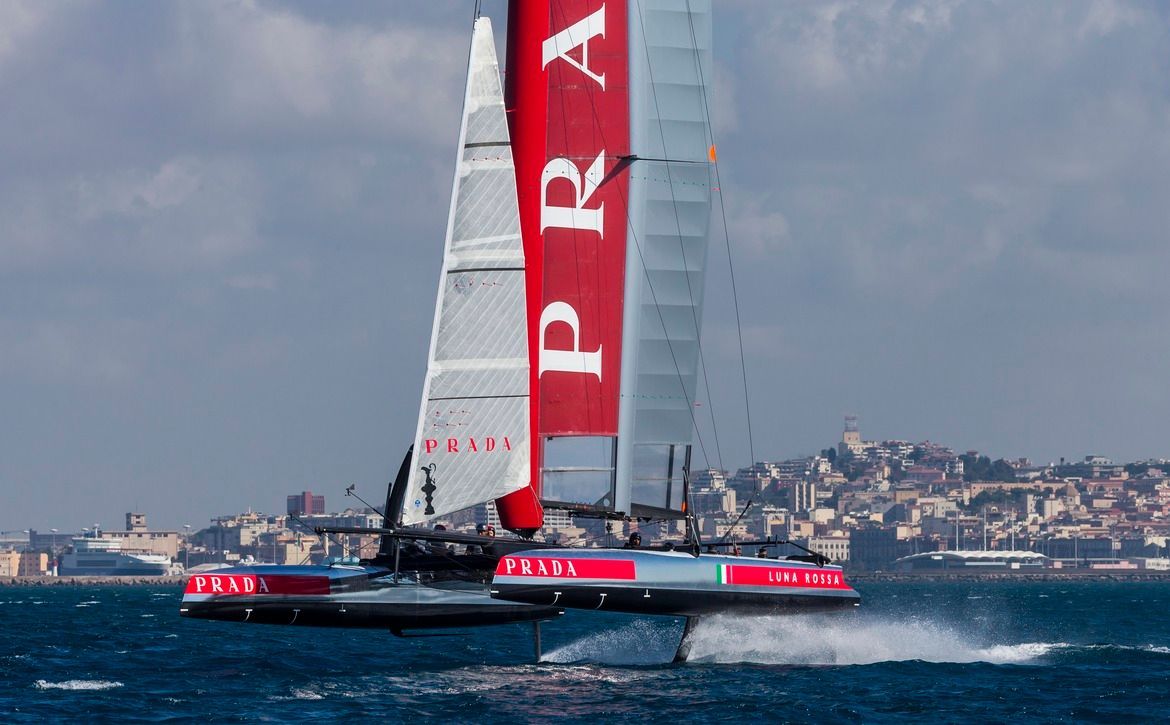
- Company: Luna Rossa Challenge
- ESTECO Software Solution: modeFRONTIER
-
Benefits:effective exploration capabilities of its proprietary algorithmsThe automation of the design processesThe seamless integration of the software chain
The 34th edition of the America’s Cup was a breakthrough event in the world of sailing, with traditional mono hulls giving way to the AC72 class foiling catamarans equipped with foils and wing sails. Since then, sailing and engineering teams have been dealing with a new set of challenges ranging from boat handling, tactics and, it goes without saying, the design of these new vessels and their subsystems.
The automatic process, developed using modeFRONTIER, enabled us to use up to 400 cores for each design, significantly reducing the computational time from 10 hours to about 40 minutes.
New America’s Cup regulations: a design challenge
From a design point of view, naval architects and engineers have been forced to rethink their way of working and open up to other design processes and methods, like in motor racing, which has already gone through a similar shift, where regulations tend to trigger a series of small incremental changes rather than radical one-off developments. Moreover, the change from yacht to flying catamaran has revolutionized sailing philosophy, leading to constant changes in speed and boat response to conditions. This means that catamaran performance needs to be maximized by taking into consideration a whole new set of predictions and external factors. When the Luna Rossa Challenge Team started developing the concept for the catamarans in view of their campaign of the 35th America’s Cup, it opted to implement design process integration and automation routines. The limitations imposed by America’s Cup regulations served to highlight the need for simulations and multi-domain analysis - tools that proved crucial to developing and improving the new AC62 class boats.

The sailing modes and the need for optimization
The new race regulations have brought about a multifaceted design process which requires taking into account different “sailing modes” and their respective physics in parallel. Even though the impact of the hull on overall performance at high wind speeds is practically negligible, its impact becomes significant at low-to-medium sailing speeds. Whereas in displacement sailing mode, the hull is fully immersed and more than 80% of the lift is due to the buoyancy of the hull, in skimming sailing mode, wind intensity makes the boat to start flying, resulting in a reduced effect of the buoyancy to 20% of the lift force. In foiling mode, at high wind speeds, the hull is completely out of the water and the catamaran sails on foils, reaching 30 knots upwind and 50 knots downwind. Analysts therefore need to consider both hydrodynamic and aerodynamic drag when switching from one mode to another, meaning that the higher the number of different configurations in terms of hull, foils and wings considered as design alternatives, the higher the probability of enhancing the performance of each mode.
Moreover, given that regulations prevent the actual sailing of 62-foot catamarans until around five months before the competition, most of the important early design decisions are necessarily based on data taken from simulations. The highly sophisticated design skills needed and the different disciplines involved in the design make performance prediction harder, leading to the conclusion that the use, coupling and automation of simulation tools in the design process are indispensable. Add to that the sheer number of variables, constraints and objectives involved and it becomes obvious that a trial and error approach is unfeasible. These considerations led the Luna Rossa Challenge Team to adopt modeFRONTIER as its automation and numerical optimization tool of choice, ensuring an integrated design approach from the earliest stages of the catamaran design process.
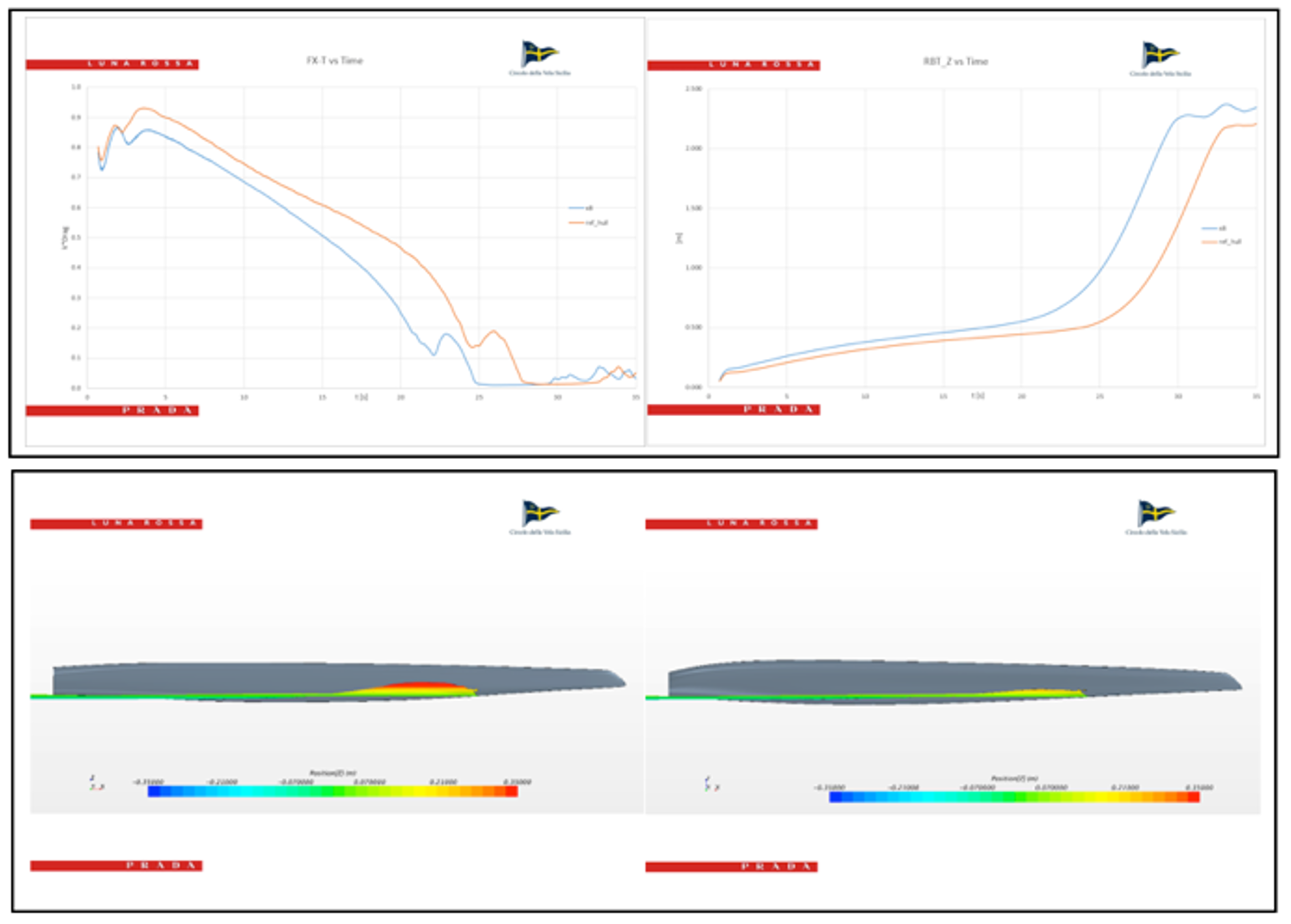
The Design Program
Hull shape optimization
As mentioned earlier, the hull is still a crucial element in the design of the boat.
In the first stage of the design process the team decided to focus on the hydrodynamic analysis, considering the displacement and skimming modes. It is in pre-start phase when the hull shape affects performance the most as the boat accelerates from an almost static condition to reach peak speed and in some of the maneuvering conditions where the wind is not strong enough to make the boat fly. To optimize the hull shape taking into account the two sailing conditions, the team developed a hull shape generator to simulate the response for each variation and calculate the drag considering exclusively the shape. Michele Stroligo, CFD Analyst at Luna Rossa Challenge, set up the logic flow with modeFRONTIER to drive the design investigation and optimization of the hull shape. He first prepared VBA macros in Excel to generate the set of control points and splines. These were then transferred to Maxsurf to create the surfaces and return a geometry file as output. CFD simulations were then computed with STAR CCM+, analyzing a single hull 3D geometry with a time-dependent simulation where the boat was free to sink, moving from the hydrostatic to the dynamic equilibrium. “The automatic process was developed using modeFRONTIER, taking advantage of the Excel direct integration node, and two scripting nodes piloting the Maxsurf routine and the execution of CFD simulations on a remote cluster. This set up enabled us to use up to 400 cores for each design, significantly reducing the computational time from 10 hours to about 40 minutes” says Stroligo.
The results from the first design step showed a reduction of drag of the order of 2% in displacement mode and of 18% in skimming mode. A single-objective process was used in the preliminary phase, where the cost function was weighted on each of the two computed conditions making this solution a compromise between the two scenarios.
In the second step, the use of a multi-objective approach gave the advantage of making the solution independent from the user defined weight, imposed previously. The geometries generated during this second optimization study ensured better results for the combined displacement and skimming conditions.
Moving forward, the team wanted to make sure that even during dynamic acceleration and take-off, the new candidates would bring about the same improvements when compared to the reference hull shape. With this in mind, the team performed a series of acceleration tests using a mathematical model that simulated wing and sail loads and the related force that pulled the boat in order to determine the time needed to switch from skimming to foiling mode. An appended hull configuration was used (hull, daggerboard, rudder and elevator) for these simulations. The angles and extensions of the appendages were the same for both cases. The comparison between a baseline hull and an optimized hull is shown in the chart below. As highlighted in the image above, the optimized hull (right) confirmed its superiority also during accelerations and take-offs, enabling the catamaran to begin the foiling phase about 5 seconds earlier, giving an advantage in terms of speed, distance traveled and agility.
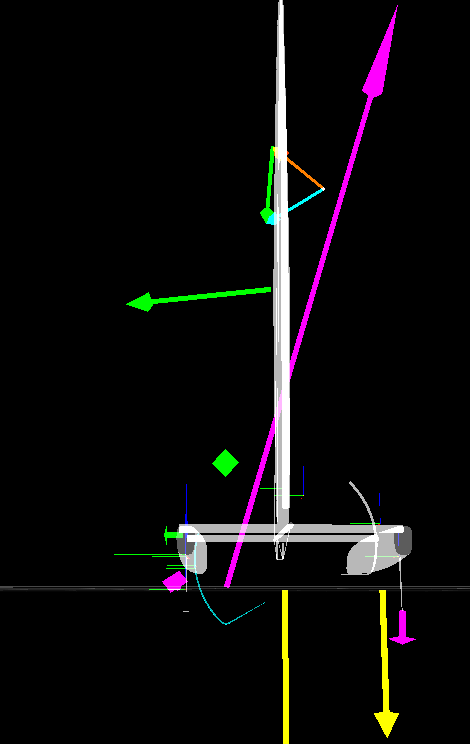
Force scheme acting on the vessel
Foil optimization
The other major task of the design program at Luna Rossa Challenge was to maximize performance during in foiling mode. The use of daggerboards - or foils - enables boats to lift both hulls out of the water and “fly” in medium and high wind intensity. From a physical perspective, foils must ensure a sufficient upward lift force - approximately equal to the weight of the boat - as well as a high horizontal force to counteract the side force generated by the wing sail and jib. At the same time, the drag and roll moment had to be minimized. To be complete, the analysis also needed to take into account constraints coming from rule specifications, structural behavior, cavitation limitations and stability criteria.
“At Luna Rossa Challenge, we managed to setup a workflow that helped us explore a very wide range of foil shapes in an attempt to identify the optimum shape for given targets (drag, heeling moment, VMG…) and subject to a number of constraints (rule compliance, structural, cavitation, stability….). In this way, the exploration became fully automatic, resulting in significant time savings” says Giorgio Provinciali, Velocity Prediction Program (VPP) Leader, in charge of the foil design. The optimization workflow for the foil was built by integrating a Rhino 3D/Grasshopper model to generate the parametric 3D geometry; a CFD code (Panel code / Ranse) then evaluated the hydrodynamic performance.
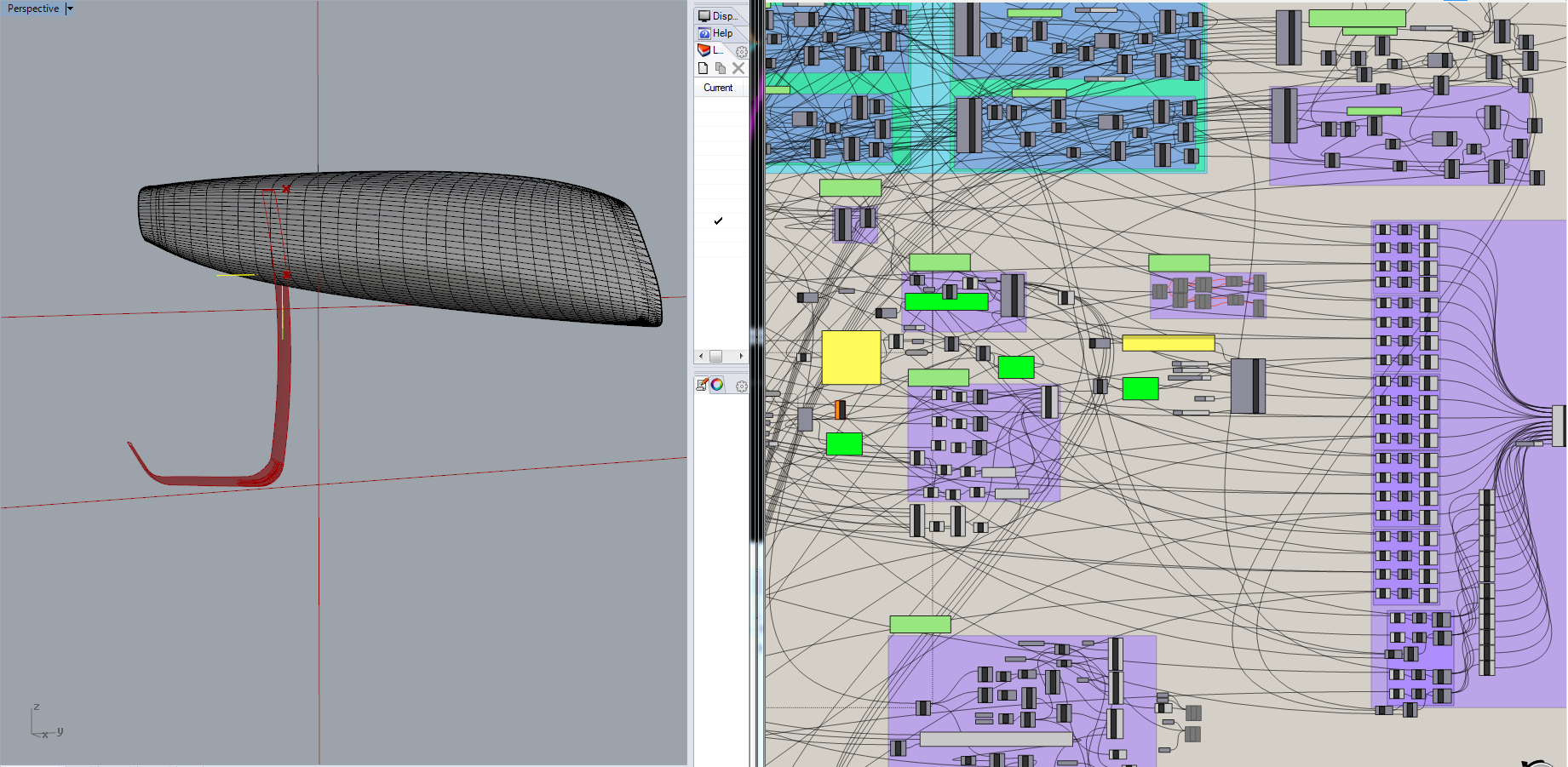
The exploration became fully automatic, allowing for significant time savings.

The geometry generation was driven by a script defining – among others - the following parameters:
- A spine curve defining the front view of the foil
- The leading edge shape
- Chord values along the span
- Airfoil thickness values along the span
- Airfoil camber values along the span
- Airfoil twist values along the span
- Airfoil sections basic shapes along the span
The file was read and run by a Grasshopper script within Rhino 3D and the updated .igs geometry file was then transferred to the CFD code selected for the simulation - either the in-house panel code (DasBoot) or Ranse (StarCCM+). When the panel code was used, leeway and rake capable of achieving a target lift and side force were sought for different speed values. Whereas with the Ranse code, the simulated values for leeway and rake were interpolated to find the target lift and side force at given values of speed. The optimization objectives were drag and roll moment minimization at different speeds determined by the upwind and downwind sailing configuration for a given wind condition. These conditions were estimated by weighting each wind condition with the expected wind distribution at the competition venue. All inputs, geometrical variables, constraints and objectives were defined in the modeFRONTIER workflow. To successfully handle the highly constrained physical problem and efficiently explore the design space, the team opted for a combination of the ESTECO proprietary HYBRID and the NSGA II genetic algorithms. By taking advantage of the internal and automatic RSM computation of HYBRID, execution time was reduced even further.
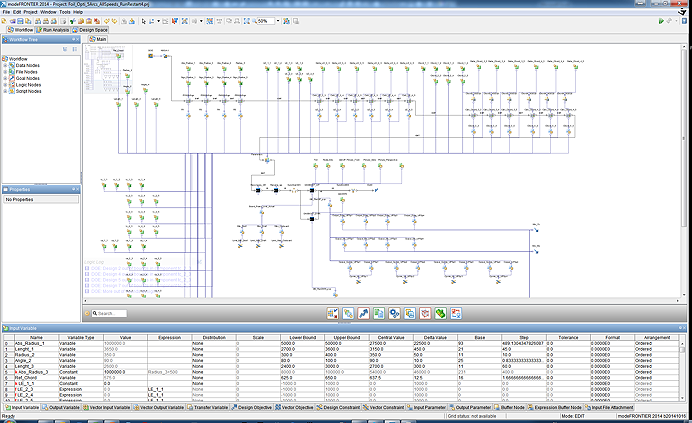
modeFRONTIER foil optimization workflow
Despite the pervasive constraints, the algorithm was able to find feasible and efficient solutions and identify the Pareto front, balancing the optimal solutions for the two objective functions.
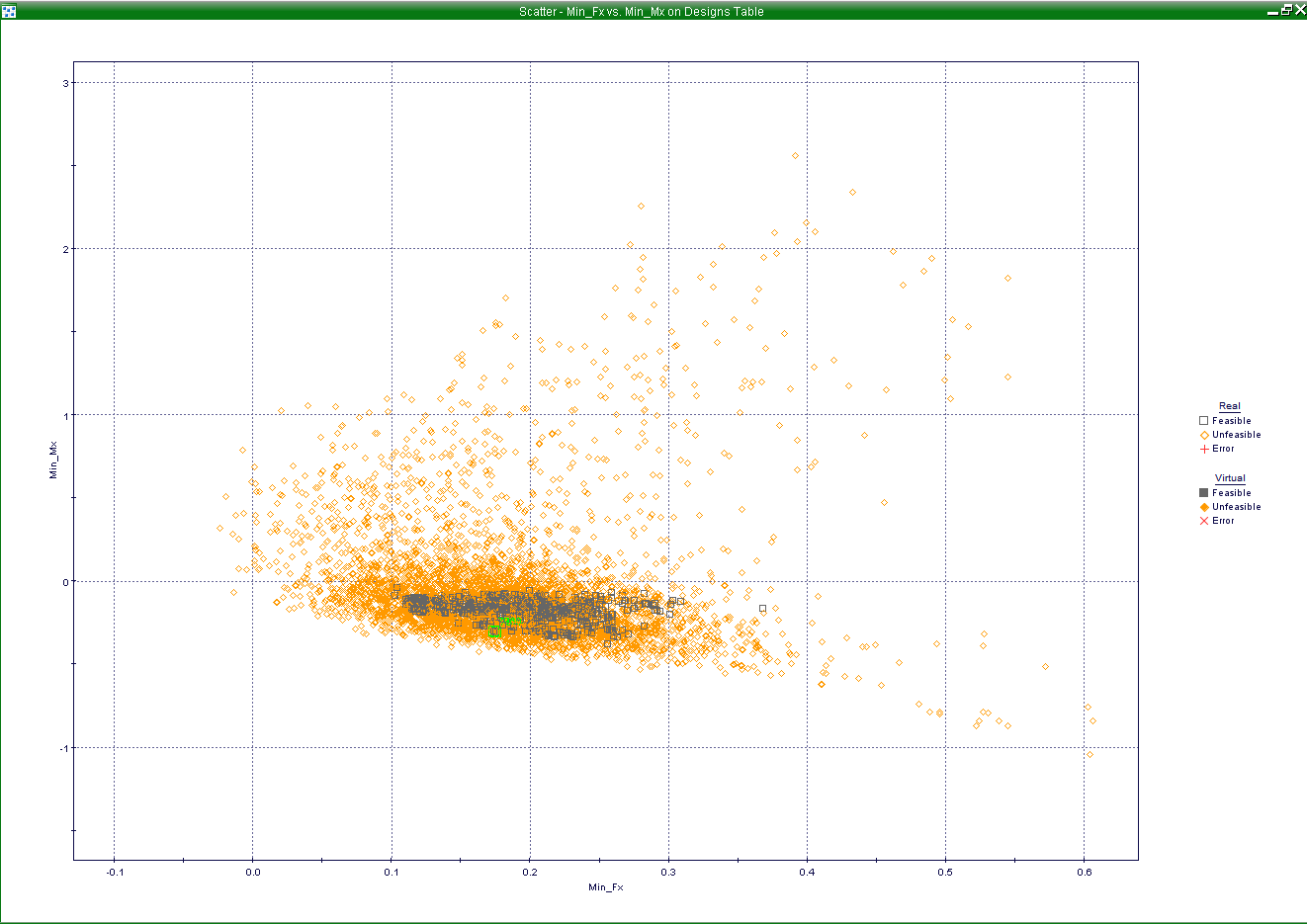
“The post-processing tools available in modeFRONTIER gave us a good grasp of the most important parameters impacting the objectives and their correlation. Even more so, these advanced tools clearly highlighted the design trends, putting us in the right direction for more detailed investigation.
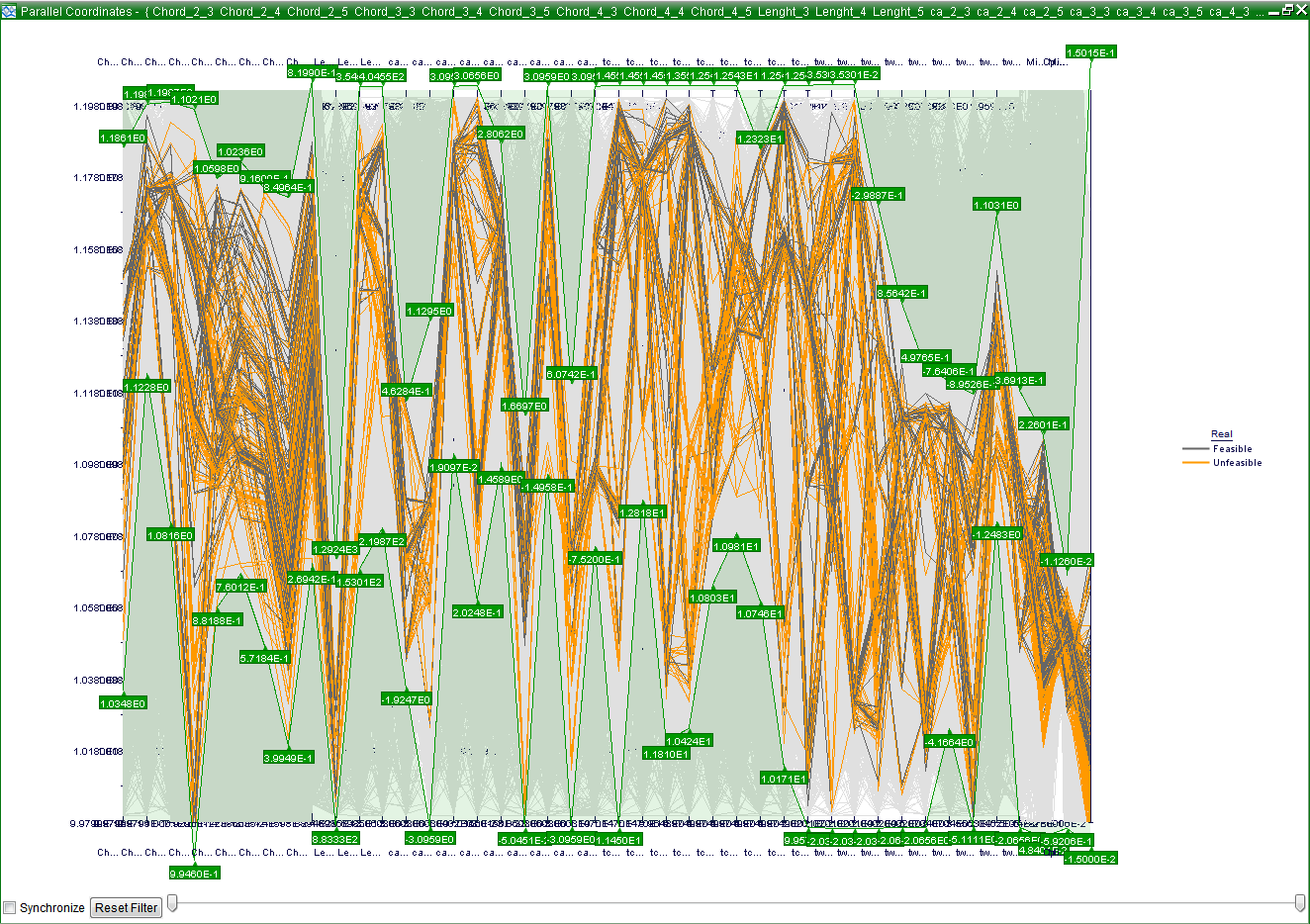
modeFRONTIER Parallel Chart for feasible design analysis
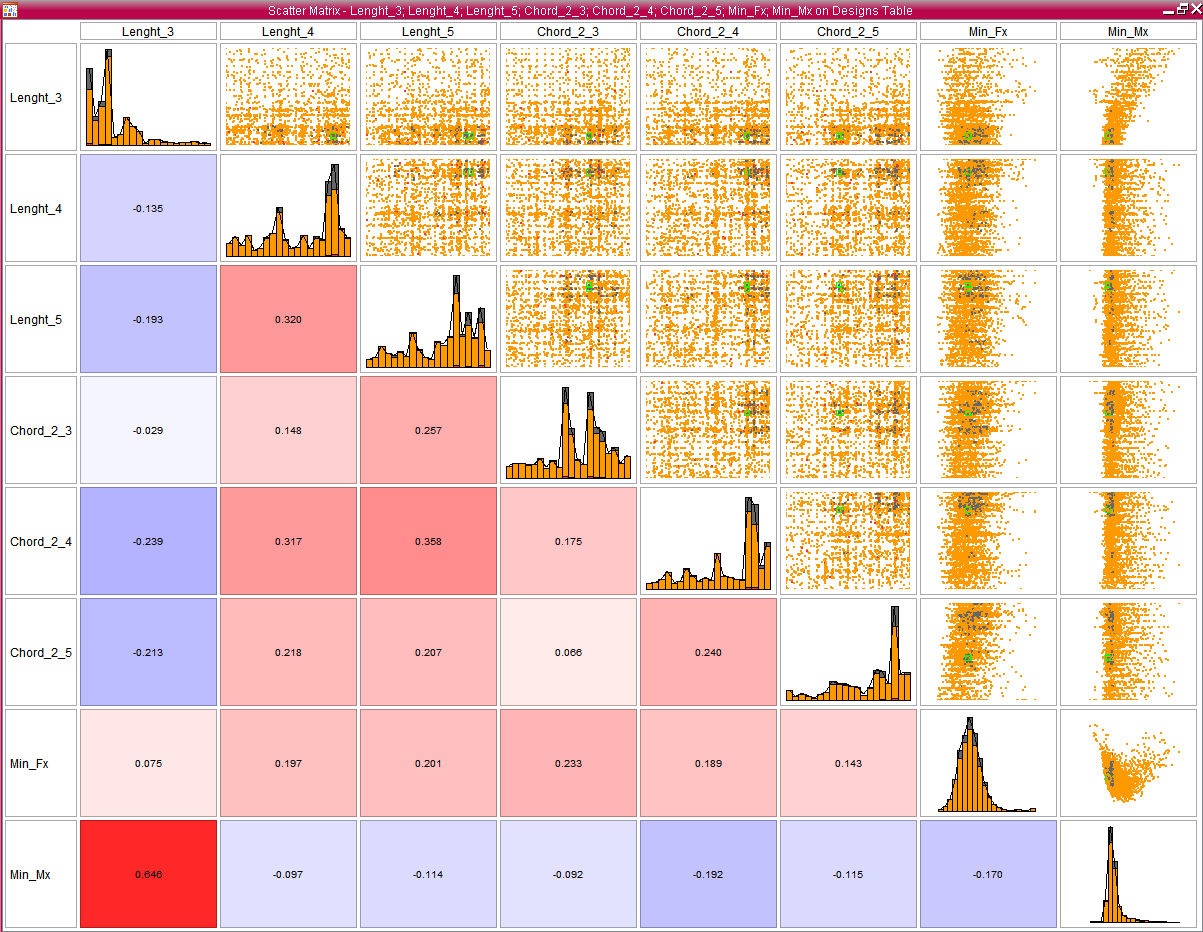
Benefits and conclusions
The America’s Cup regatta showcases the best sailing and engineering teams in the world who push design and vessel performance to the limits in their aim to win the coveted competition. Relying on design and simulation tools has become unavoidable; however, choosing the technology that serves as a true enabler of a designer’s ingenuity is still an invaluable source of advantage against other teams.
As highlighted in the case studies, modeFRONTIER gave Luna Rossa specialists four key advantages: the automation of the design processes, the seamless integration of the software chain, the effective exploration capabilities of its proprietary algorithms and – boosting the efficiency of the whole simulation process - the flexible handling of distributed computing resources. By integrating and automating the multiple tools, engineering team was able to let the complex, multi-disciplinary simulation workflows run autonomously and simultaneously consider several physical aspects while having more time to focus on design analysis, post-processing of results and in-depth decision making. The intelligent design space exploration and optimization capabilities of the algorithms combined with the efficiency of using a distributed computation set-up helped reduce the development time and quickly delivered prototypes to be tested by the sailing team. By running parallel simulations on a network of computers using the modeFRONTIER Grid Tool, designers found better solutions with a reduced number of iterations made by the robust algorithms.
Further steps of the design program at Luna Rossa aim to include the other disciplines (structures and aerodynamics) as well as other modeling approaches (VPP simulation, race modeling program, wing sail optimization, and boat handling) in the process. Provinciali concludes that “working on the Velocity Prediction Program (VPP) and race modeling within the foil design optimization workflow would allow us to optimize boat performance by also considering the race track and the wind conditions expected at the AC venue.” Stroligo points out that “sensible reduction of parallel simulation execution in this perspective gives us the option to add robustness in the design optimization process of the hull shape taking into account the variability of sea conditions as well as focus our attention on maneuver and handling requirements”.
The designers
Giorgio Provinciali| VPP Leader
Member of Luna Rossa’s Design Team from 2001 to 2007 and, as consultant, he contributed to the victory of BMW Oracle Racing in the 2010 America’s Cup. In the 34th America’s Cup he was in charge of the appendages design and the performance prediction program for team Luna Rossa.
Michele Stroligo | CFD Analyst
Naval architect and marine engineer specialized in CFD and hydrodynamic studies applied to yacht design. In 2010 Michele joined Oracle Team USA for the 34th America’s Cup where he carried out hydrodynamic CFD simulations for hulls, appendages and rudders.


